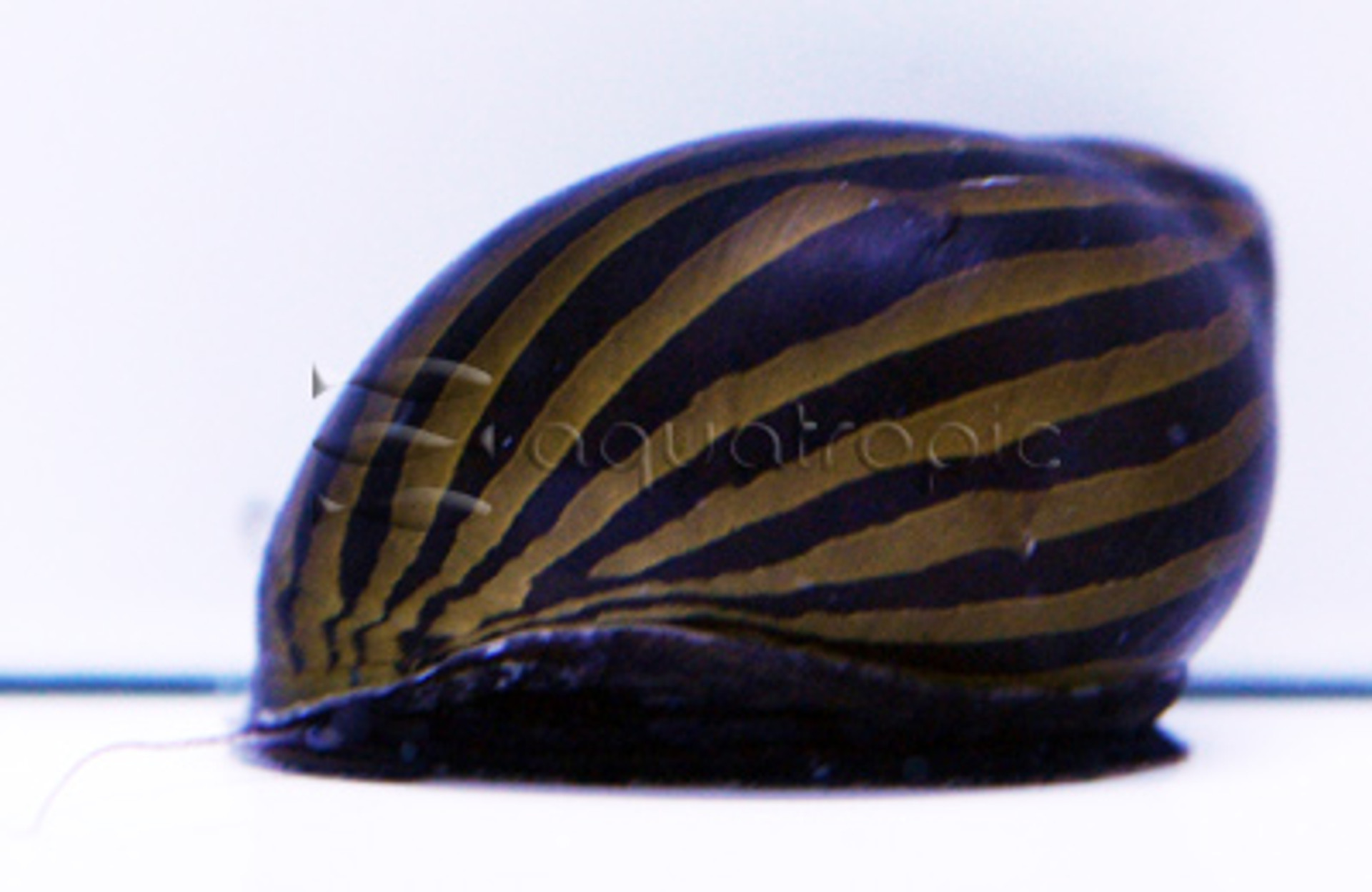Clean-up Crew Members

It doesn’t matter what type of freshwater aquarium you have, a clean-up crew is a necessary component to help reduce the amount of cleaning you need to perform. An efficient clean-up crew can help reduce the amount of detritus, algae and left over food. Each member has its own specific job description, so try adding a variety to your aquarium. Always be sure their tank mates will not make a meal out of your clean-up crew.

The Zebra Nerite Snail is a great addition to help keep uneaten food and algae at a minimum in community and planted aquariums. They are a peaceful snail that will not bother other snails, fish or plants. They will actually only reproduce in brackish water, so you do not have to worry about them taking over your aquarium like other snails. Like many other snails the Nerite Snail does not have a very long life span and they will have to be replaced every year or so. Since this snail mostly relies of on detritus and algae as their food source, but if that becomes scarce be sure to supplement their diet with sinking pellets.

The Asian Gold Clam is an awesome clean-up crew member because they filter the aquarium’s water, which helps keep it clean and clear. They do this by siphoning uneaten food and detritus from the water column. The clam is a great option for tanks that have very messy eaters like goldfish and cichlids. They tend to bury themselves in the substrate and most of the time you will only see their siphon sticking out, which is a pretty cool skeptical to witness. Do not house with pufferfish because they love to make a meal out of clams, especially since their shell helps keep the puffer’s beaks dulled down.

The Japanese Algae Eater Shrimp is very efficient at cleaning algae off aquarium plants. They are also known to eat leftover food found in the substrate, which makes the ideal addition. Provide an environment with plenty of hiding places and algae. They have a fairly long life span (for shrimp) of three years. Since, they rely on algae as their main source of food they are not recommended for newly setup aquariums. The Japanese Algae Eater Shrimp is also a great addition to ponds because they can tolerate low levels of salinity.

Cory cats are a fan favorite in the freshwater aquarium hobby due to their small adult size and their cleaning ability. Aquatropic has a large variety of Corydoras available, one of which is the Peppered Cory. They are a very peaceful bottom dweller that can be added in groups into your aquarium without bothering other fish and plants. They prefer a sandy substrate because their barbells can be easily damaged. Also use caution when using a net on them. They will eat just about anything they can find in the substrate and will spend their day scooting around looking for food. If detritus becomes scarce, supplement their diet with sinking pellets.

The Tiger Loach scavengers the bottom of the aquarium looking for leftover food. They can be semi aggressive towards other fish, but multiple loaches can be added to one aquarium. Their adult size is larger than the cory cat, so be sure the aquarium is large enough. The Tiger Loach is considered a “scale-less fish,” which means they can be more susceptible to diseases like Ich. Provide an environment with lots of caves and hiding places for this loach to sleep in.

The Zebra Orinoco Pleco is a beautiful pleco that can be seen stuck against the glass all day cleaning off the algae. They are a very efficient algae eater and will actively clean the glass, which means less cleaning for you. Like most plecos, the Zebra Orinoco has a long life span and can grow to be quite large so be sure they have enough space. Provide lots of hiding spaces to help reduce their stress especially while they are acclimating to their new environment. Even though they love eating algae that cannot be their only food source, so provide a varied diet of algae wafers and meaty, sinking pellets.